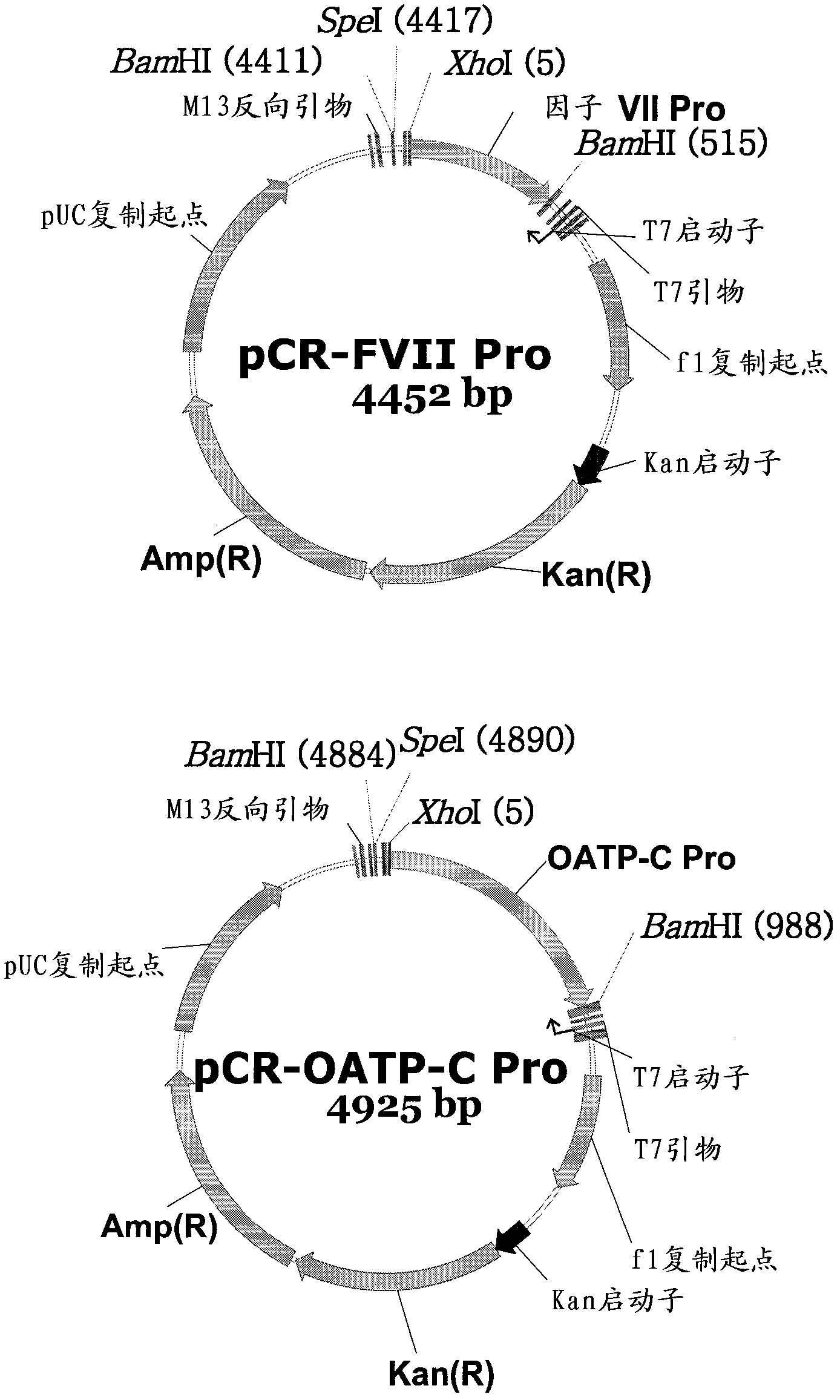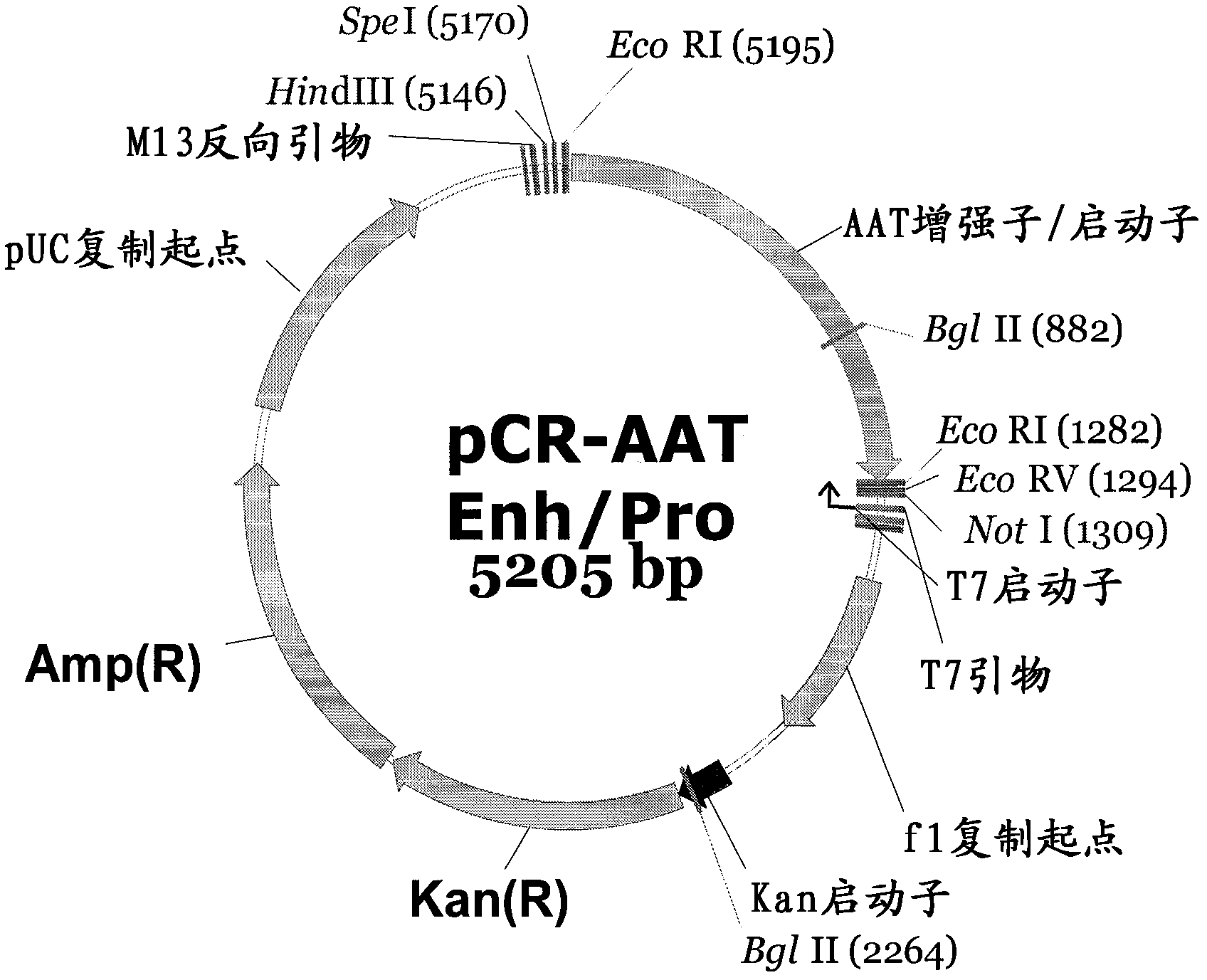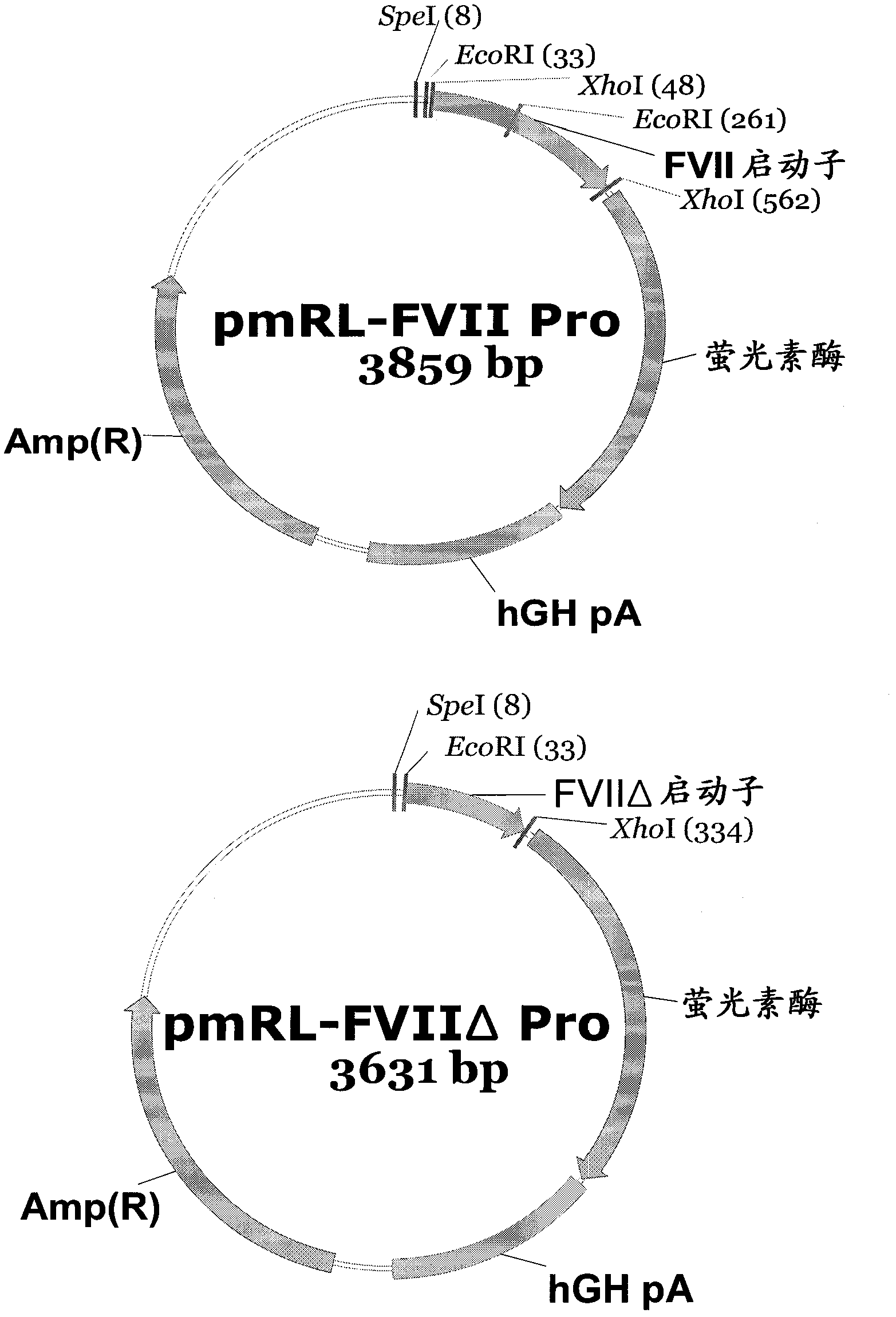Expression vector suitable for expressing coded sequence for gene therapy
A coding sequence and expression cassette technology, applied in the field of gene therapy expression vectors, can solve the problem of activity reduction and other issues
- Summary
- Abstract
- Description
- Claims
- Application Information
AI Technical Summary
Problems solved by technology
Method used
Image
Examples
Embodiment 1
[0111] Example 1 : Isolation and Activity Analysis of Liver Tissue-Specific Expression Promoters and Enhancers
[0112] Isolation and activity analysis of liver tissue-specific expression promoter
[0113]Genomic DNA was extracted from cell lysates of a human hepatic cell line (Chang cells) using the DNeasy Tissue Kit (Qiagen). To isolate the FVII promoter, PCR was performed using genomic DNA as a template, primer sets of SEQ ID NO: 1 and 2, and DNA polymerase (Ex-Taq, Takara) to obtain a nucleotide sequence having SEQ ID NO: 41 of DNA fragments. Specifically, PCR was carried out according to the following conditions: first denaturation at 94°C for 5 minutes; 30 cycles of denaturation at 94°C for 30 seconds, annealing at 56°C for 30 seconds and extension at 72°C for 1 minute; final extension at 72°C for 3 minutes. The PCR product was purified by gel extraction and inserted into pCR2.1-TOPO plasmid vector. The FVII promoter having the nucleotide sequence of SEQ ID NO: 41 ...
Embodiment 2
[0137] Example 2: Isolation of hFIX UTR and introns of liver-specific genes, and analysis of gene expression efficiency of UTRs and introns
[0138] Identify the UTR of hFIX and construct the expression vector containing UTR
[0139] 1.2 mg of total RNA was extracted from 1 g of human liver tissue using an RNA extraction kit (Pharmacia Biotech), which was homogenized with a homogenizer in advance. Single-stranded DNA was synthesized using the extracted RNA as a template, M-MuLV reverse transcriptase (Takara), and oligo-dT17 primer (Takara), and double-stranded cDNA was synthesized from the single-stranded DNA using DNA polymerase I (Takara).
[0140] In order to evaluate the effect of FIX UTR on gene expression efficiency, PCR was carried out using cDNA as a template, a primer set (SEQ ID NO: 11 and 12) and Ex-Taq designed from the FIX nucleotide sequence (Genbank accession number NM000133) to FIX cDNA with 5'UTR (SEQ ID NO:62) and 3'UTR (SEQ ID NO:63) was obtained. The PCR...
Embodiment 3
[0184] Example 3: Isolation of liver-specific LCR and analysis of gene expression efficiency of LCR
[0185] Isolate liver-specific LCR and construct a plasmid vector containing LCR
[0186]The position of the TGTTTGC motif was analyzed downstream of the α1-antitrypsin, alpha-fetoprotein and albumin genes expressed only in liver tissue. The results are shown in Figure 10 middle.
[0187] Such as Figure 10 As shown in , seven TGTTTGC motifs are distributed in -7.8kb of the α1-antitrypsin gene, six motifs are forward, and one motif is reverse; there is also a forward motif located in α1- The -108bp site of the antitrypsin gene. At the -3.8kb site of alpha-fetoprotein, two TGTTTGC motifs are distributed in the forward direction, and one motif is in the reverse direction; at the -6kb site of the albumin gene, one motif is in the reverse direction. In addition, TGTTTGC motifs clustered at the α1-antitrypsin gene-800bp site, the alpha-fetoprotein gene-1.5kb and -500bp sites,...
PUM
 Login to View More
Login to View More Abstract
Description
Claims
Application Information
 Login to View More
Login to View More - R&D
- Intellectual Property
- Life Sciences
- Materials
- Tech Scout
- Unparalleled Data Quality
- Higher Quality Content
- 60% Fewer Hallucinations
Browse by: Latest US Patents, China's latest patents, Technical Efficacy Thesaurus, Application Domain, Technology Topic, Popular Technical Reports.
© 2025 PatSnap. All rights reserved.Legal|Privacy policy|Modern Slavery Act Transparency Statement|Sitemap|About US| Contact US: help@patsnap.com



